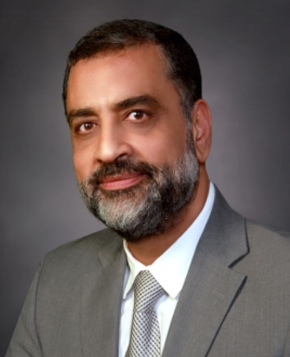
M. Hesham El Naggar
Affiliation:
Fellow of Canadian Academy of Engineering, Distinguished University professor, Western University, Canada
Title:
Application of Physical Modeling in Seismic Vulnerability Assessment of Geostructures
Abstract:
The dramatic consequences of recent seismic events (e.g., Indonesia, Haiti, Japan, China and Türkiye) underscored the high seismic vulnerability of the built environment, particularly for critical modern infrastructures. In recent years, vulnerability assessment tools and indices of seismic risk have been established to quantify the level of damage to the whole infrastructure system or its critical elements. In addition, analysis techniques and design provisions were established aiming to ensure safe and reliable infrastructure. Most of the developed methodologies were based on the Performance-Based Seismic Design (PBSD) approach, in which performance objectives define tolerable risk of suffering damage for designated levels of earthquake hazards. Therefore, the delimitation of appropriate parameters, such as inter-story drift-ratio, shear forces and bending moments associated with different levels of damage is significant in describing the performance objective. These damage measures are also the foundation element for the seismic fragility analysis and seismic risk analysis.
Seismic risk analysis is necessary to mitigate the potential losses resulting from future earthquakes. A reliable vulnerability assessment requires the knowledge of the mechanical properties of the examined systems, understanding of their response characteristics along with their potential damage or failure mechanisms. This will furnish the necessary information for comprehensive modeling approaches. Numerous approaches are available for seismic analysis and design for both aboveground and underground structures, which are characterized by different levels of complexity and sophistication. These approaches aim at assessing the seismic response of the investigated system considering a multitude of uncertain parameters and conditions. Chief among these uncertainties, especially for geostructures, are the soil-structure interaction characteristics and failure mechanisms under earthquake events with varying features that can have a great influence on the structural response. Physical modeling is one of the best tools for evaluating seismic response of geostructures and their potential damage or failure mechanisms as well as quantifying their damage index. It provides experimental data and observations to validate theoretical approaches. Due to limitations of laboratory facilities and cost, only scaled models are used in most physical modeling experiments, and the size effect must be considered carefully. Those limitations are further amplified in the course of investigating geostructures because of the soil-structure interaction effects that have to be considered in the model.
This presentation discusses recent developments in physical modeling techniques for geostructures under seismic loading. It covers innovative testing methods for both 1g and multiple g environments. The investigated geostructures include tunnels, pipelines, subway station structures, culverts, soil retaining structures and bridge foundations. The testing approaches involve a wide range of novel pushover testing apparatus, 1-g large outdoor shake tables and in-door shake tables, arrays of shake tables and centrifuge-mounted shake tables. The experimental measurements and observations include porewater pressure and acceleration measurements of the soil medium, and the forces and bending moments of the tested structure along with its failure pattern and mechanism. Finally, the salient features of the discussed physical modeling methods are highlighted along with their limitations.
Keywords: seismic vulnerability, geostructures, physical modeling, shake tables, centrifuge tests
Personal Profile:
Dr. Hesham El Naggar is a Distinguished University professor and a world leader in foundation dynamics and geotechnical earthquake engineering. He advanced the state-of-the-art in analysis and design of foundations for dynamic loads. His work on foundation design and geotechnical earthquake engineering has been incorporated into design guidelines recommended by regulatory bodies and learned societies. He is Editor-In-Chief of Soil Dynamics and Earthquake Engineering and past Associate Editor of the Canadian Geotechnical Journal. He published more than 550 technical papers and book chapters including more than 400 in selective and prestigious journals soil-structure interaction and geotechnical earthquake engineering; and consulted on major projects worldwide. He has delivered more than 80 plenary, keynotes and invited speeches at national and international conferences. Dr. El Naggar attracted more than $20M of research funding and graduated more than 120 PhD and Master students. In recognition of his outstanding research contributions, Dr. El Naggar received many prestigious awards including the Cross-Canada Lecture Tour, Geosynthetics, Stermac, Meyerhof and Canadian Geotechnical Colloquium Speaker Awards from the Canadian Geotechnical Society; the Ontario Professional Engineers Medal for Engineering Research & Development; the prestigious 2021 Zhongguancun Award for Outstanding Contribution, from Beijing Council of Science and Technology He is an elected Fellow of Canadian Academy of Engineering, the Engineering Institute of Canada and the American Society for Civil Engineers.

 Website: http://www.icvram2024.org
Website: http://www.icvram2024.org icvram2024@tongji.edu.cn
icvram2024@tongji.edu.cn Address: 1239 Siping Road, Shanghai, P.R. China
Address: 1239 Siping Road, Shanghai, P.R. China
 loading......
loading......